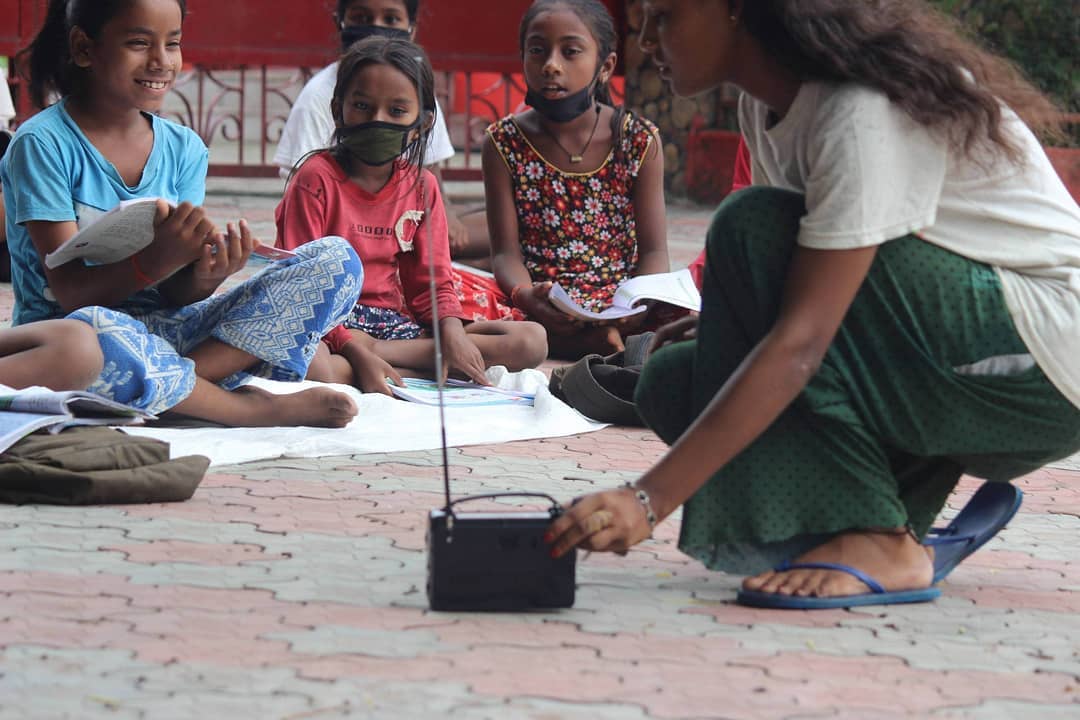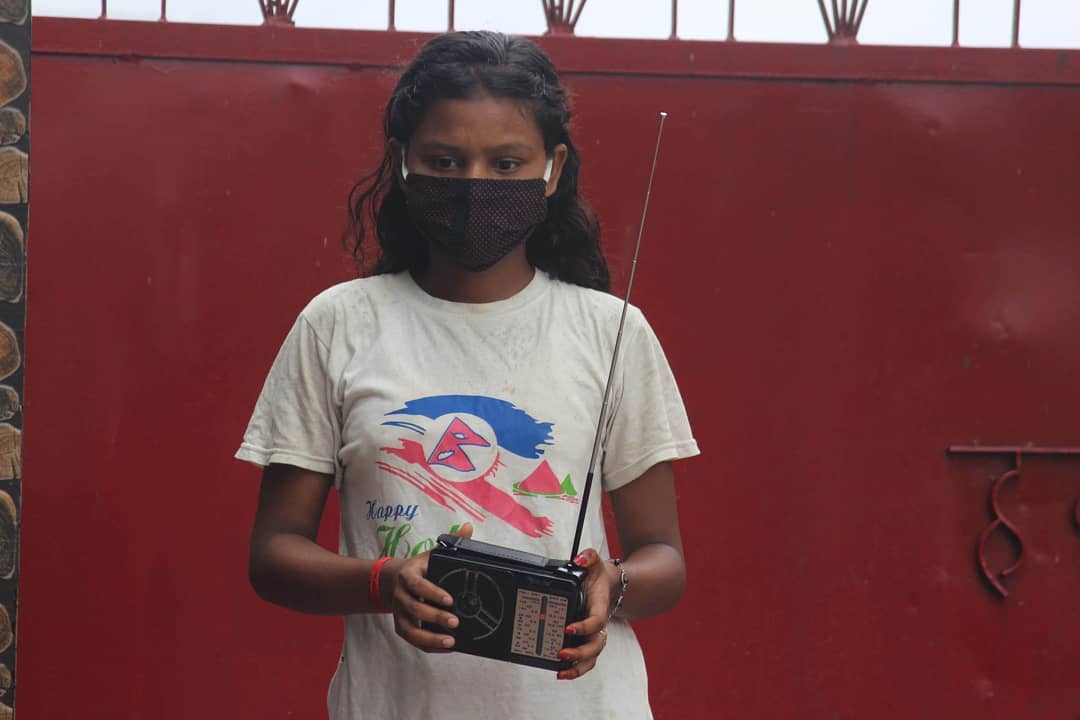The digital divide – II by Parwat Portel

Photo: Parwat Portel/ photo.circle
It is 8:30 AM and Janaki Kafar, 16, of Mechinagar, Jhapa has just finished cleaning the local Hanuman Temple. At exactly 9 AM, local children gather around, set jute mats and sit. They pull out their notebooks, books, pens. Janaki turns on the radio and for the next two and a half hours the students listen to radio classes.
When the COVID-19 pandemic started, Dhulabari Higher Secondary School switched to online classes for the middle and high school students. But Janaki has not been able to take advantage of those classes. “I don’t have a mobile or the internet,” says Janaki. Her family lives on the banks of the Tami River, and the family has been struggling financially. Her father lost her job due to the COVID-19 lockdown. “It is difficult for my father to even feed us,” she says.

Photo: Parwat Portel/ photo.circle
Janaki’s school understood that there were many students who attend the school who suffer economic hardships and cannot afford online classes for their children. They formed a group, raised funds and distributed radios. “I really wanted to attend those online classes, but it is only wishful thinking,” says Janaki.
Rajkumari Sharma, parent of one of the children at school said that while the school’s idea was good, it should have been better thought through. “It would have been easier if there was a teacher to guide the students along with the voice on the radio,” says Sharma, “For now, they listen and then they forget, I am not sure how effective that actually is.”
That does not discourage Janaki. She is keen to learn so she finishes her chores early every day and sits down to listen to the radio and read along. Janaki’s motivation and drive is now inspiring 40 other kids in her neighbourhood to do the same.
Photo/Text: Parwat Portel @parwatportel7
Edit: Mallika Aryal @mikaness
#nepalphotoproject
#nepalnow
#covid19
